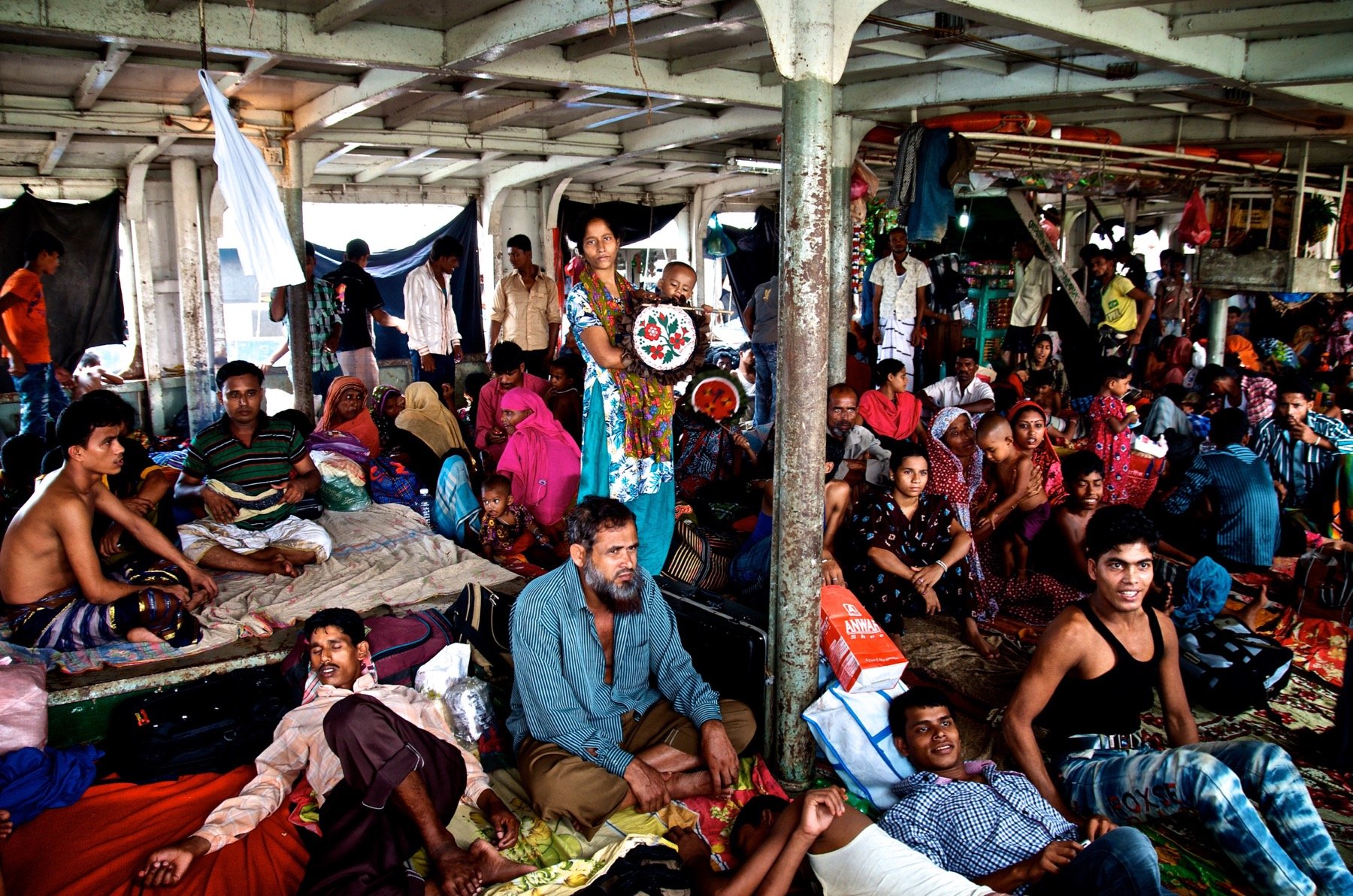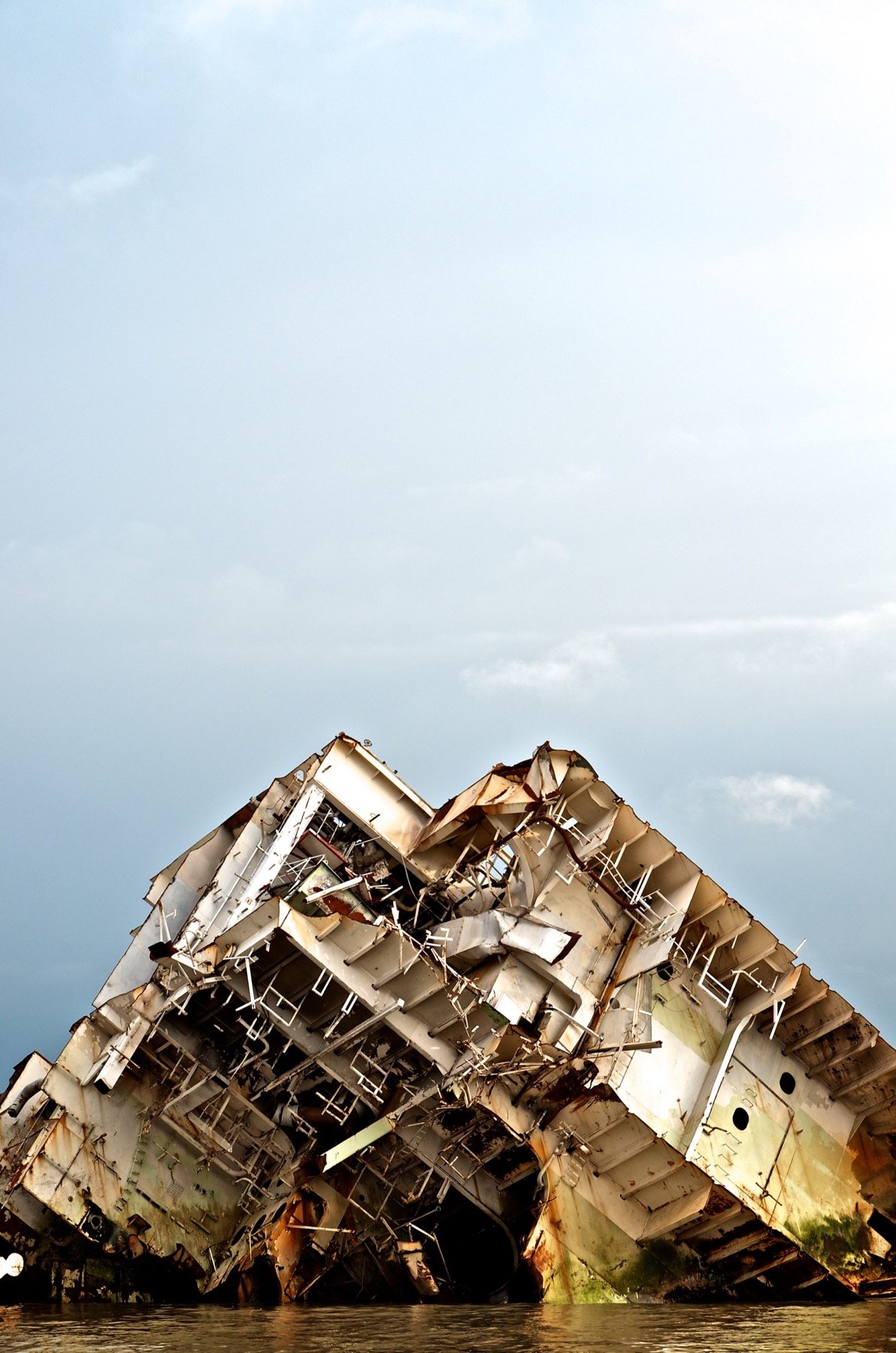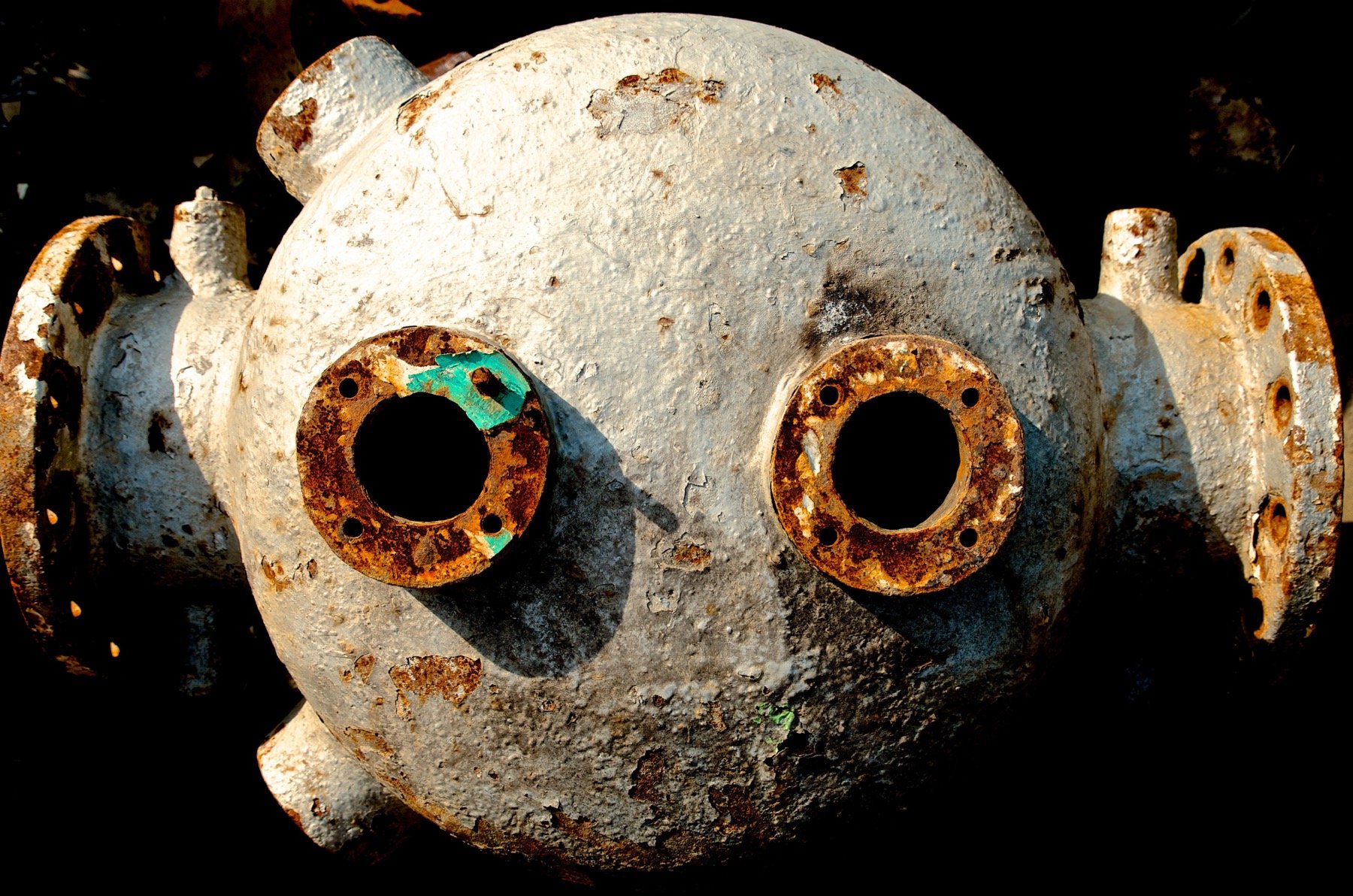How Rust Became an Addiction: Bruno Saguer’s Journey Into the Ship Graveyards of Bangladesh
Welcome to another captivating photo essay, this time by Bruno Saguer. We'd love to hear your thoughts. Feel free to comment below and, if you're interested, share your photo essay with us. Your perspectives add valuable dimensions to our collective exploration.
Bruno Saguer traveled to Bangladesh to photograph the world’s largest ship graveyard.
But he brought back more than photos. He brought back proof that rust can be poetic. In the coastal scrapyards of Chittagong, he discovered a haunting beauty hidden in decay. Oxidorphines, his long-term project, captures the moment when machines become memory, when steel giants are dismantled by hand and the sea surrenders its ships to rust. What begins as industry ends in strange stillness, and Bruno frames it with an eye for both structure and sorrow.
This is a photographer’s journey into the collapse of global trade.
Brunos’s images do not shout, they observe. Denied access at first, he navigated bureaucracy and backchannels to step into landscapes most people never see. He wasn’t there to protest or report, but to reflect, to turn corrosion into composition and waste into something quietly human. His work reveals not just what these ships were, but what they leave behind.
“Oxidorphines” by Bruno Saguer
Oxidorphines is a journey into the final breath of ships, into the rust that clings to their skin and the stories that sink with them. It is not merely a portrayal of a ship graveyard in Chittagong, Bangladesh, but a visual testimony of transformation from grandeur to dismantling, from utility to discard. Amidst the scrap and sweat, between corroded steel and hardened hands, I capture the clash between the poetry of the sea and the stark reality of deconstruction.
This work is neither a protest nor a technical chronicle, but an aesthetic immersion into the decaying beauty of corrosion, into the imprint that time and human toil leave on every stranded hull. Photography as an addiction to decomposition, to the texture of the ephemeral.
“From its nest, the seagull takes off over the sea. From the shipyard, the vessel sets sail. Everything tastes of salt. The salt of life, the salt of death.
To launch, to hoist, to depart, to sail, to weather the storm, to board, to dock...
A ship always carries the emotional weight of a journey toward the horizon, rocked by waves.
Whether carrying people, treasure, or trade, every ship bears the significance of its voyage.
Iodine drifts in the air, sea spray weaves into tangled hair flowing in the wind. A maritime symphony whispers all around.
But many ships don’t reach a dignified end. After 20 or 30 years riding the waves, they’re cast aside, pushed to die like abandoned animals, left to scavengers.
Bound for slaughter.
Some places in the world have become their graveyards. And the locals—made their executioners.
But this isn’t Père Lachaise in Paris. No Balzac, Camus, Chopin, Oscar Wilde, or Jim Morrison lie here. Instead, ships bear flags of convenience—fiscal loopholes, legal evasions, flags with no country.
There is no grey bin for maritime waste.
No final place where all things belong.
They simply end. Nowhere.
Eid Mubarak. August 2012. Chittagong, Bangladesh.
A northern “still life” made of open-air scrap. These shores should be erased from nautical charts, kept beyond the reach of any compass or bearing.
The poetry of the sea ends here. The carnage begins.
No blood is spilled—only oil, diesel, and thick, contaminating fluids.
Dignity slips through the scuppers.
Humiliation pools in the bilges at the end of this tragic journey.
Paints, heavy metals, asbestos—
A corrosive cocktail you won’t find on a Mediterranean cruise.
There will be no dinner at the captain’s table tonight.
No necks are cut, but every part of the ship is dismantled—hull to deck, cabins to engine room, even the prized bridge, where only hours before the horizon was scanned from a privileged perch.
The swords and guillotines of old revolutions are now acetylene torches and cutting saws.
A metallic roar.
No siren songs here—just horns of iron pain.
Tons of steel are fed into the maw of shredders.
As far as the eye can see, rusted carcasses marooned at low tide.
No longer sand, but rare metals of another periodic table.
Human termites gnaw at metal, wood, plastic, rope.
Dusk falls on the “unshipyard” of cruise liners, cargo ships, and freighters.
Floodlights flicker on.
Stripped of rest, the pillaging continues—plates, bolts, no loose ends.
In three to six months, the vessel is no more.
A ship scrapped in three or four months in Bangladesh nets a million dollars in return—on a five-million-dollar investment.
And yet, this apocalyptic landscape seduces.
It releases photographic endorphins.
The eye, the camera’s viewfinder—both tint crimson under a leaden sky.
Steel skeletons run aground in rhythm with the tides.
Swarms rush port and starboard, scrambling for the best loot—not astrolabes or sextants, but lifeboats, portholes, wires, propellers, spark plugs, pistons, lamps, sensors, sonar, radar, GPS.
All of it cloaked in raw rust.
Rust merchants. Steel auctions.
Everything is for sale. Even souls.
Recycling without activism—just a euphemism.
Melted down, but not damned.
Some pieces will sail again—aboard new vessels, or hanging in chic homes and restaurants.
Better that than being left to rot on a deserted beach after a failed escape from a cyclone.
Such is the cycle of the sea.
Knots and nautical miles become cubic metres of waste and steel.
Personal stories cling to these corroded remains.
Like that of Hossain Khatun. A Bengali man, generations deep, rooted in toxic mud.
His descendants likely will be too.
There’s no way out, unless you swim—to nowhere.
His nephew Kamal, 14, walks him to the shoreline each day as the fishermen return.
If the tide’s low, they can get closer.
Hossain is 64 and blind. Kamal guides his arm so he can stretch his hand toward the fishermen and beg.
Kamal has spent nearly all his life working in the yards.
The toxicity took his vision.
Hossain is on the same path—unless he’s hurt first (they use the blind to crawl into dangerous crevices of the ships), or unless he tries to swim away…
To earn a plate of rice or dhal, they cut through plates of steel.
They travel from Panchariya to Faujdarhat—almost 20 km of sandy graveyard.
No insurance. No safety gear.
Roughly 200,000 souls live trapped like fish in a stagnant pond.
Over 80 yards compete for the dying.
But the rust—captivates.
Nearly one in five of the world’s aging ships end up here.
Many NGOs have reported the working and environmental conditions.
That ship lamp from the Singaporean vessel “Green Earth” will look lovely somewhere.
It’s docked in port now, set to sail for Malaysia tomorrow.
But it’ll be back.
I won’t.
How strange that so much decay can be so visually fascinating.
Corrosion addiction could be the title of this landscape.
Thankfully, my memories are rusting.
Only images remain.
Another contradiction.
Anchored in rust, one becomes a witness to one of the most extreme forms of circular economy—a cycle both toxic and hauntingly poetic.“
You describe the shipbreaking yards as both tragic and beautiful. What made you want to photograph a place that shows both life and death at the same time?
Initially, my goal was inspired by a documentary I saw many years ago about Steve McCurry’s work. I was fascinated by these immense junkyards and piles of scrap metal. Of course, I knew my approach had to be different—I’m not Steve. Later, I saw similar imagery from Skeleton Bay in Namibia, reinforcing my fascination. My lifelong passion for the sea and boats naturally guided me here. In fact, the project continues beyond Chittagong—I have another segment in progress about a wooden fishing boatyard in Gujarat, India.
When I booked my tickets, I didn’t realise my visit coincided with Eid Mubarak—a holiday. I thought, “In a country facing so much poverty, surely no one rests in these scrapyards.” I was mistaken; the yards were nearly empty. But this quietness revealed another kind of beauty. Unlike Steve, who captured the harsh realities of labour, I found myself drawn to the stark poetry of abandoned shapes stranded in rust and mud. To give deeper meaning to my trip, I journeyed upriver, discovering how life around the boats and rivers is a core part of everyday existence in Bangladesh.
You mention that this is not a protest project, but something more personal and visual. What emotions or thoughts do you hope people feel when they look at these photos?
I’m deeply inspired by Edward Burtynsky’s powerful images. The concept of the Anthropocene—a new geological epoch in which human activity profoundly reshapes the planet—strongly resonates with me. Living amidst our own "waste," from microplastics to vast metal structures, is now an unavoidable reality. Rather than despair, I see a strange beauty in this altered landscape. It's not resignation but cautious optimism: perhaps one day these scrapyards will no longer exist, and my photos will remain as a memory of a difficult chapter we've overcome. Just as great photographers documented wars, I hope my photographs encourage reflection on the impact of our existence and the resilience found within it.
The word “Oxidorphines” mixes rust (oxide) and endorphins (feelings of happiness). Why did you choose this name, and how does it explain your experience while taking these photos?
Getting permits to access these scrapyards was extremely challenging. Due to years of critical reports from NGOs, entry is strictly prohibited. Eventually, through the Bangladeshi consul in Barcelona, we secured a contact. This led to endless calls, waiting, adventures—and even some bribery.
This struggle made each photograph feel like a thrilling victory. Navigating those muddy, rust-covered beaches, convincing local fishermen to take us offshore to capture different angles—each step, each click of the camera triggered a rush of euphoria. This powerful blend of rust and excitement led me naturally to “Oxidorphines”: a term encapsulating the visceral, emotional, and visual intensity of exploring a place suspended between industrial beauty and human tragedy.



































You brought back a wind direction indicator from one of the ships. What does that object mean to you now, and how does it connect you to this project or to the people who live and work there?
The iconic piece I brought back is a wind direction indicator. As an avid windsurfer, it's a playful reminder of how the wind guides my life and passions. While it may no longer point towards Bangladesh, it connects me directly to the experiences and emotions I felt while creating this project. Each glance brings back memories of those beaches, the rust, the people, and the quiet dignity hidden amid decay.



